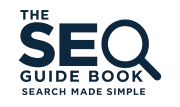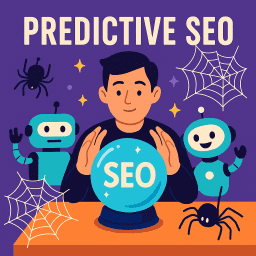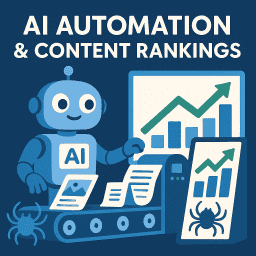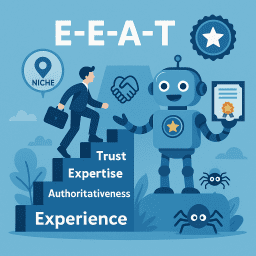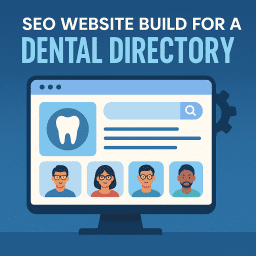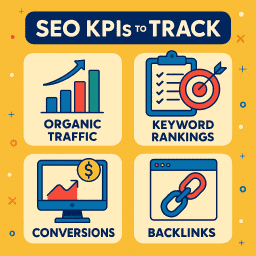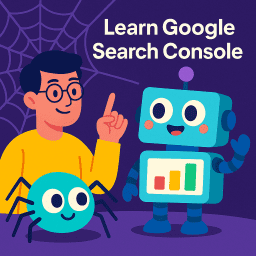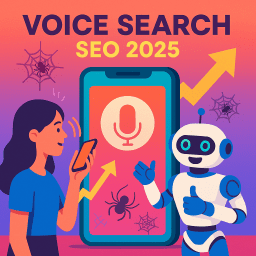What Is Search Intent? Understand and Optimise for It in 2025
Why intent beats keywords in today’s search landscape

🎯 Why Matching Intent Beats Keyword Stuffing Every Time
🔍 Search intent isn’t just a buzzword—it’s the foundation of successful SEO in 2025. It’s the “why” behind every Google search. And if your content doesn’t match that “why”, it won’t rank—no matter how well-optimised it is.
In this guide, we’ll break down what search intent is, the four main types, how to identify it, and—most importantly—how to align your content with it to win rankings and clicks.
🧠 What Is Search Intent?
Search intent (also known as “user intent”) is the reason someone conducts a search. It reflects what the user hopes to achieve with that query—whether that’s learning something, finding a product, comparing services, or visiting a specific site.
- “How to fix a leaking tap” → Informational intent
- “Best plumbers in London” → Commercial intent
- “Book emergency plumber near me” → Transactional intent
Understanding intent lets you create the right content, in the right format, with the right tone—which is exactly what Google rewards.
📦 The Four Main Types of Search Intent
1. Informational Intent
Goal: The user wants to learn something.
Examples: “What is schema markup?”, “How do I start a podcast?”
Best content: Blog posts, guides, tutorials, videos, explainers
2. Navigational Intent
Goal: The user is looking for a specific website or brand.
Examples: “LinkedIn login”, “Ahrefs blog”, “Nike trainers”
Best content: Branded pages, high-authority landing pages
3. Commercial Investigation
Goal: The user is researching products or services before making a decision.
Examples: “Best SEO tools 2025”, “Semrush vs Ahrefs”, “Affordable CRMs for start-ups”
Best content: Comparison pages, case studies, reviews, top 10 lists
4. Transactional Intent
Goal: The user is ready to act (buy, sign up, book).
Examples: “Buy wireless headphones”, “SEO audit service”, “Get a free trial of Monday.com”
Best content: Product pages, service pages, landing pages, pricing pages
🔍 How Google Understands Search Intent
In 2025, Google doesn’t just match keywords—it understands context using AI models like BERT, MUM, and Gemini. That means Google knows the difference between “apple pie recipe” and “Apple pie chart software”—even if they contain the same words.
It also analyses:
- Click patterns (which types of content people choose)
- Search modifiers (e.g. “buy”, “vs”, “how to”)
- Related searches and query refinements
If your page doesn’t satisfy intent, Google will test it—and then demote it.
🛠️ How to Identify Search Intent for a Keyword
1. Google the Keyword
Look at the top results. Are they:
- Guides and how-tos? (Informational)
- Product pages and pricing? (Transactional)
- Reviews and comparisons? (Commercial)
2. Check SERP Features
- Featured snippets: Often informational
- Shopping ads: Transactional
- People Also Ask: Informational/commercial
- Map Pack: Local intent
3. Use Modifier Words
| Modifier | Likely Intent |
|---|---|
| “how to”, “guide”, “tips” | Informational |
| “best”, “top”, “vs” | Commercial |
| “buy”, “book”, “subscribe” | Transactional |
| “login”, “Facebook”, “Amazon” | Navigational |
🎯 Matching Your Content to Intent
- Informational intent? Write a detailed, non-salesy guide.
- Commercial intent? Write comparison articles or roundups with CTAs.
- Transactional intent? Lead with pricing, features, and benefits.
- Navigational intent? Make sure your branded pages rank #1.
📌 Real Examples of Search Intent in Action
1. Keyword: “best email marketing tools”
Intent: Commercial Investigation
Winning content: Comparison blogs, review roundups, expert picks
2. Keyword: “mailchimp pricing”
Intent: Transactional
Winning content: Landing pages, pricing tables, signup options
3. Keyword: “how to start a newsletter”
Intent: Informational
Winning content: Step-by-step guides, video tutorials, checklists
📈 Why Search Intent Matters More Than Ever
- Improves rankings: Google prioritises relevance over keyword density
- Boosts engagement: Content that fits intent gets more time on site
- Drives conversions: Right message, right time = higher sales or signups
- Feeds AI search: Engines like Perplexity prefer structured, intent-aligned answers
⚠️ Common Mistakes When Ignoring Intent
- Writing “how-to” content for a keyword with transactional intent
- Over-optimising for volume instead of value
- Using misleading titles to chase CTR (but increasing bounce)
- Trying to force all keywords into blog posts
📚 How to Build a Search Intent Strategy
- Map all keywords by intent
- Segment content strategy by funnel stage
- Audit existing content for mismatched intent
- Rework or combine content that doesn’t rank
- Use tools like Surfer SEO, Clearscope, or MarketMuse to refine optimisation
🧠 What the Experts Are Saying
“Search intent is Google’s north star. If your content doesn’t match, nothing else matters.” — Lily Ray
“Keyword research without intent analysis is like driving blindfolded.” — Aleyda Solis
“Intent is the bridge between searcher and solution. Miss it, and you’re invisible.” — Brian Dean
📝 Recap and Clarify: Post-Specific FAQs
What is search intent in SEO?
Search intent is the reason behind a search query—what the user hopes to achieve by searching.
Why is matching search intent important?
Because Google ranks pages that best satisfy the user’s intent. Mismatched content won’t perform well.
How can I identify search intent?
Analyse the top-ranking content for that keyword. It reveals what Google believes best satisfies that query.
💬 Final Thought
“Search engines don’t rank content based on what you want to say—they rank it based on what users want to find.” — David Roche
